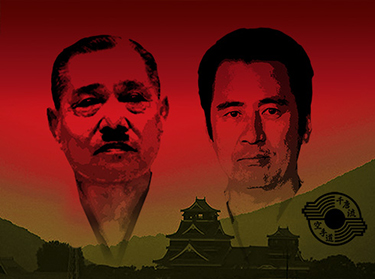



Soke Sensei has been the Master of the International Chito Kai since 1984. In June 1984, the founder of Chito Ryu Karate, Dr. Chitose Sensei, passed away and his son Chitose Yasuhiro ascended to leader of the International Chito Kai. In keeping with traditional Japanese custom he changed his name to Chitose Tsuyoshi, in honour of his father.
Soke Sensei is the head of the International Chito Ryu Karate Federation. The International Technical Program for Chito Ryu is directed by Soke Sensei and members of the ICKF Technical Committee.
BC Chito Kai is associated with the International Chito Ryu Karate Federation and recognize Soke Sensei as Chito Ryu's supreme leader.
Soke Sensei travels throughout all member countries, conducting annual Chito Ryu clinics and grading sessions at the request of member organizations. Soke Sensei travels throughout Canada, as head of Chito Ryu, and conducts his inspirational tour to meet all British Columbian Chito Ryu members.
BC Chito Kai has been active in British Columbia for over 30 years. It is a not-for-profit association dedicated to the Chito Ryu discipline of Karate; it currently oversees approximately 500 registered members. BC Chito Kai was founded on the principles of volunteerism, community and a common Chito Ryu passion.
Dr. Tsuyoshi Chitose, also known as Chinen Gua in Okinawa, was the founder of Chito Ryu Karate. Born in Kumochi, Naha City, Okinawa-ken (prefecture), on October 18th, 1898 Dr. Chitose created Chito Ryu after spending years studying both Shorin Ryu and Shorei Ryu. He became the Supreme Instructor, 10th dan, of Chito Kai of the All Japan Karate-do Federation.
Chito Ryu developed from two disciplines, Shuri no Te (now known as Shorin Ryu) and Naha no Te (now known as Shorei Ryu). O-Sensei created Chito Ryu by combining the merits of each and along with his medical knowledge came up with a more healthy alternative.
O-Sensei was introduced into the secrets of Naha no Te by the respected fifth master Aragaki Ou at the age of seven. At that time Gichin Funakoshi a pioneer of Karate-do on the mainland was also in Naha as a student.
At Shuri city O-Sensei studied under such masters as: Choyu Motobu, Chotoku Kiyan, Haragusuku Chiyomu, Kanryo Higaonna (who also taught Chojun Miyagusuku, the founder of Goju Ryu and Kenwa Mabuni, the founder of Shito Ryu).
In 1922 O-Sensei went to Tokyo to study medicine and while there he assisted in the opening of Funakoshi's Shoto Kai Yotsuya dojo. He instructed in kumite and the kata of Seisan and Bassai.
After World War II, in March 1946, O-Sensei opened a karate dojo called Yoseikan in Naka Machi, Kikuchi-gun, Kumamoto-ken.
In 1958 O-Sensei attained the the rank of Juudan from Zen Okinawa Karate Kobudo Rengo Kai (The all Okinawa Karate and Weaponry association).
In 1975 he relocated his dojo which was known as the Sohonbu (General headquarters) to Tsuboi, Kumamoto City, where it presently exists.
At O-Sensei's death in 1984, his son Yasuhiro Chitose assumed the name of his father, Tsuyoshi Chitose and took on the responsibilities as the new Soke.